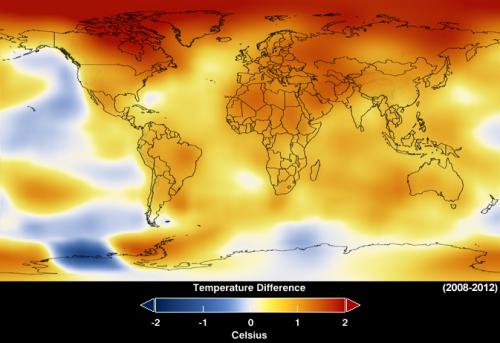Most people reading this journal live in a place far removed from a polar area. What we know about the Arctic or Antarctica is based primarily on National Geographic articles, documentary shows, reality TV, or Disney movies. Polar regions are seen as exotic locals, isolated from the rest of the world, so, consequently, unrelated to most of the world. Why, then, should be care about polar environments when we don't live in a polar region?
The polar area are significant for many reasons. ClimateThe average weather over a particular region of the Earth. Climate originates in recurring weather phenomenon that result from specific types of atmospheric circulation. change is happening more quickly in the polar regions than at most other places on Earth. Earth's climate and weather systems and ocean circulation patterns are influenced by changes in polar environments. Information about Earth's past climates is contained in polar ice. The Arctic is a source of natural resources, including petroleum. Changes in Arctic sea ice affect shipping and transportation, with resulting impacts on economies.
The polar regions' relevance to climate change is receiving more recognition in popular news stories. ClimateThe average weather over a particular region of the Earth. Climate originates in recurring weather phenomenon that result from specific types of atmospheric circulation. change is seen more quickly and dramatically in the polar regions. As shown in the image below, the greatest temperature anomalies (changes from the average) are seen in the polar regions, with the change being an increase in average temperature.

Increased temperatures cause ice to melt and permafrost to thaw. Some of the melted ice will result in a rise in global sea levels. Globally, sea levels are expected to rise by at least seven inches by the year 2100. Local areas will see variations of this measurement. Thinking that most of the U.S. population lives in a coastal state, sea level rise has a wide ranging impact.
PermafrostPermanently frozen ground., or ground that remains frozen year round, is thawing as a result of warming temperatures. As the ground thaws, it becomes more unstable. Roads and buildings built on permafrost may buckle or collapse. Why we should care about this is that, currently, about 10% of domestic petroleum production was drilled in the Arctic. From 1980 - 2000, 20% of domestic oil was produced in the North Slope oil fields (see http://www.akrdc.org/issues/oilgas/overview.html ) If the infrastructure used to truck people and supplies to the oil fields and to carry the oil from well to tanker fails, the general population will be affected. Fuel prices would rise, impacting the economy.
The tundra is also an integral part of the carbon storage and release cycle. Researchers at Toolik Field Station are working to understand the intricacies of the carbon cycle processes, and how changes in the Arctic affect the carbon cycle. More details about the research and why we should care about polar regions will be described in future journal posts.


Comments